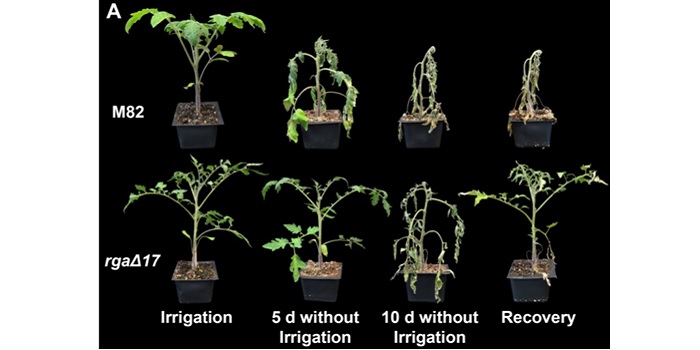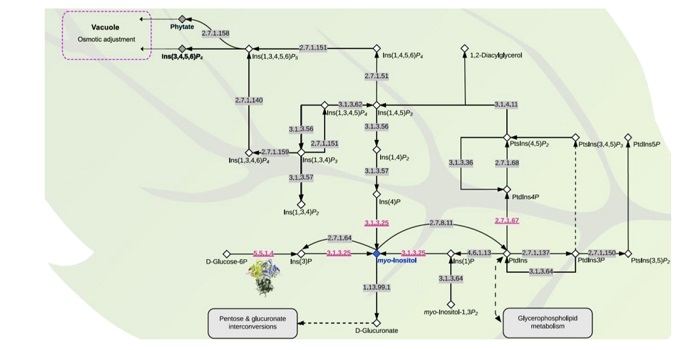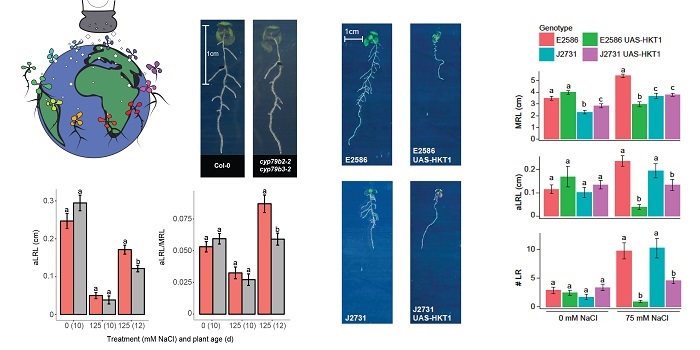
The tomato DELLA protein PROCERA acts in guard cells to promote stomatal closure
Blog, Plant Science Research Weekly, Research, Research Blog, The Plant CellNuclear accumulation of DELLA proteins induces transcriptional reprogramming and is well known to suppress the gibberellin (GA) pathway. While DELLAs can negatively regulate GA, increased GA levels can also signal DELLA degradation. GA is a growth-regulating hormone that is also involved in inhibiting…

The genome sequence of the wild tomato Solanum pimpinellifolium provides insights into salinity tolerance
Blog, Plant Science Research Weekly, Research, Research BlogWild relatives of domesticated plants, such as tomato, are valuable resource for breeding, but their genomes are often not very well sequenced. Razali et al. provide the first high-quality genome of wild tomato S.pimpinellifolium LA0480, and use Dragon Eukaryotic Analysis Platform to functionally annotate…

Update: Oxygen sensing and integrative stress signaling in plants
Blog, Plant Physiology, Plant Physiology: Updates, Research, Research BlogBy Romy Schmidt, Daan A Weits, Claudio FJ Feulner, Joost T. van Dongen
Plants grow in a dynamic environment and continuously face numerous stress conditions in parallel. This fluctuating environment pushed the evolution of extensive metabolic flexibility (Sweetlove et al., 2010; van Dongen et al.,…

Arabidopsis DNA Methylome Stability under Stress
Blog, Plant Physiology, Plant Physiology: On The Inside, Research, Research BlogIt has been speculated that DNA methylation could complement genetic variation, as a mode for transferring heritable information, to contribute to phenotypic variation. Indeed, DNA methylation states can be maintained faithfully over both mitotic and meiotic cell division. According to this view, any…

Update: Nuclear Cap-Binding Complex in Abiotic Stress Responses
Blog, Plant Physiology: Updates, Research, Research BlogBy Agata Daszkowska-Golec
The nuclear cap-binding 16 complex (nCBC) in higher eukaryotes specifically binds to the monomethylated (7-methylguanosine (m717 GpppN)) cap structure at the 5¢ end of freshly transcribed mRNA. In addition to protecting mRNAs from degradation by exonucleases, the nCBC functions…

J. Exp. Bot. Special Issue. The plant cuticle: old challenges, new perspectives ($)
Blog, Plant Science Research Weekly, Research, Research BlogThe cuticle is a cell-wall polymer that protects against desiccation, pathogens and UV light. Domínguez et al. provide an open-access editorial that describes this fine collection of articles covering all aspects of the plant cuticle, from its evolutionary origins to its ecological significance. Within…

Genetic components of root architecture remodeling in response to salt stress
Blog, Plant Science Research Weekly, Research, Research Blog
While everyone knows that salt stress reduces root growth, Julkowska and colleagues examined salt-stress induced changes in Root System Architecture (RSA) by studying 347 Arabidopsis accessions. The authors collected 17 RSA traits and developed an app allowing interactive exploration of collected…

Update: Root plasticity and internal aeration
Blog, Plant Physiology: Updates, Research, Research BlogBy Takaki Yamauchi, Timothy D Colmer, Ole Pedersen, Mikio Nakazono
Introduction
Root acquisition of water and nutrients is essential for plant growth and crop productivity (Lynch, 2015). An improved understanding of root system development and functioning, to identify root traits contributing to…

Update: Signal dynamics and interactions during flooding stress
Blog, Plant Physiology, Plant Physiology: Updates, Research, Research BlogBy Rashmi Sasidharan, Sjon Hartman, Zeguang Liu, Shanice Martopawiro, Nikita Sajeev, Hans van Veen, Elaine Yeung, Laurentius A.C.J. Voesenek
Abstract
Flooding is detrimental for nearly all higher plants including crops. The compound stress elicited by slow gas exchange and low light levels under…

